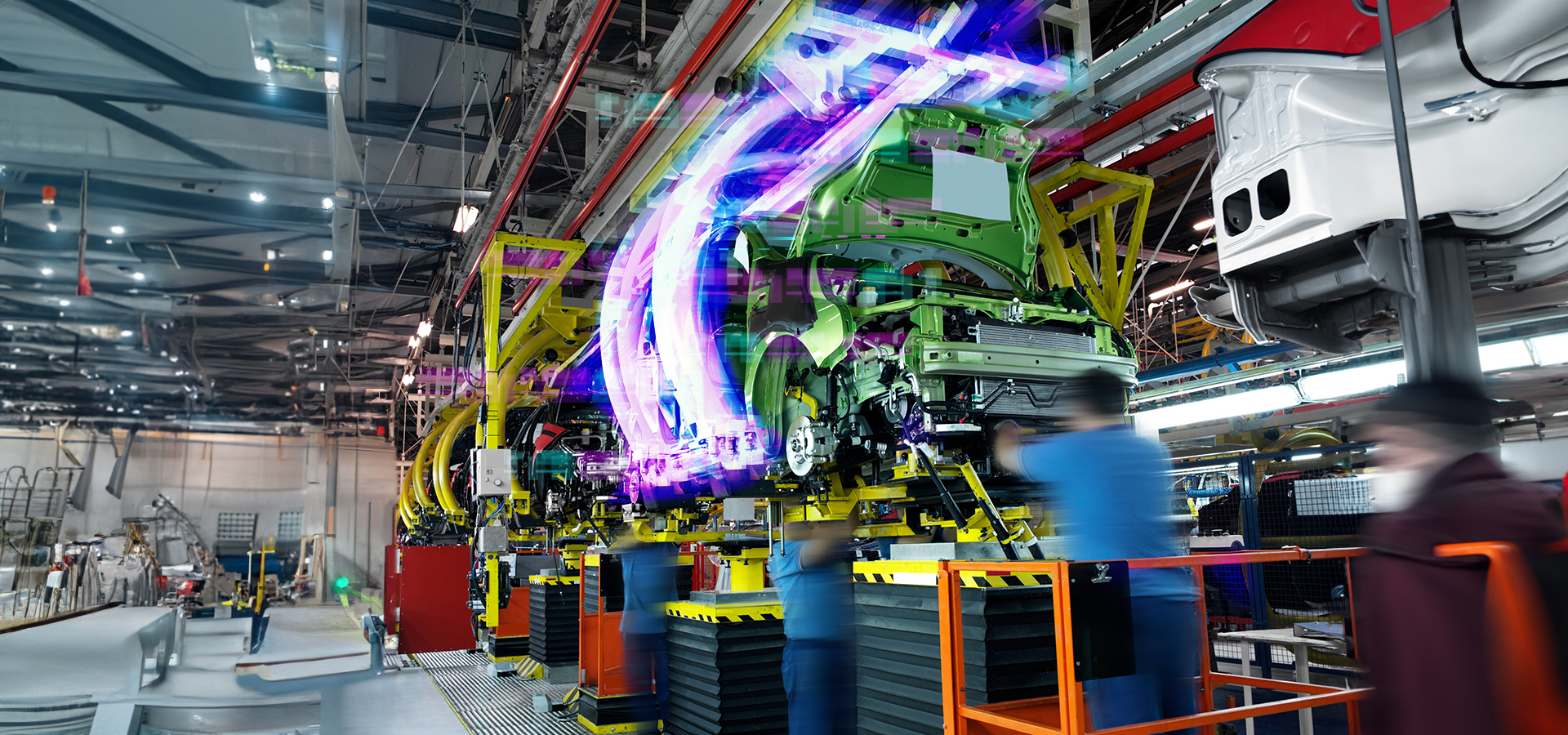
#06: How Would Disassembly Work Within a Circular Future?
Join us as we learn the crucial role of disassembly in achieving circularity and how to recover resources and reduce waste through sustainable design.
#06: How Would Disassembly Work Within a Circular Future?
In this episode, our disassembly expert Tim McAloone reveals the profound role of disassembly in shaping a circular and sustainable future. Dive into strategies for optimizing materials in product design, disassembling and remanufacturing products for extended use and the escalating significance of right-to-repair movements, all of which contribute to the long-term viability of businesses worldwide. Discover more
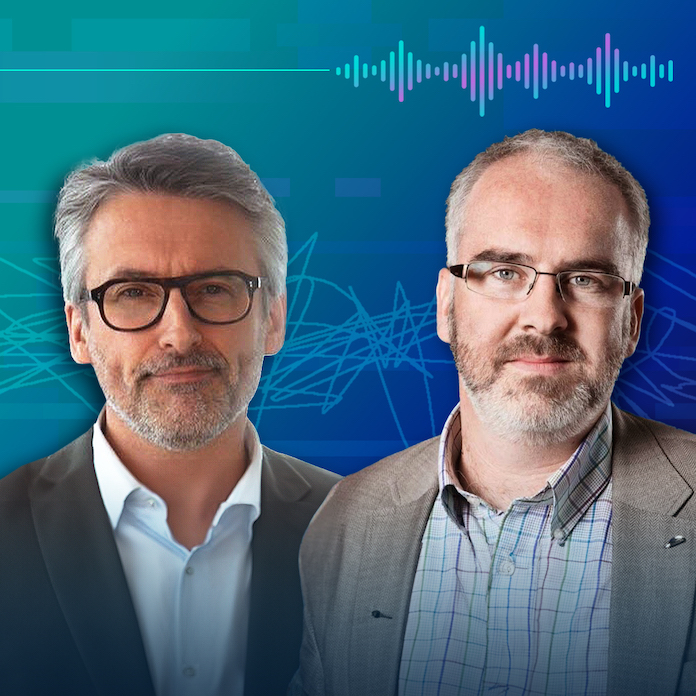
Meet our speakers


“It really is important to challenge ourselves with the extremes when designing and developing products. It will be wonderful to be able to design products where we won’t need to think about the end-of-life qualities because they just last forever.”
Tim McAloone
Read the transcript
Narrator: This is Disruptors Unleashed, a series that explores the disruptive technologies shaping our world. Previously, we looked at the intricacies — and the environmental impact — of the refurbishment industry, with our trailblazers: Jonathan Dutton from Dassault Systèmes and Camille Richard from online e-commerce platform Back Market.
Jonathan joins us again to speak with Tim McAloone, a professor at the Technical University of Denmark. He shares with us his insights on the game-changing ways that disassembly is shaping a circular and sustainable future.
Jonathan: Hello, and welcome to this conversation on the positive actions that research education and industry are taking to achieve a sustainable economy. From resource depletion to pollution to consumer satisfaction, there is more than ever a need to decouple material usage from value creation. Today, we'll explore the need to disassemble today's manufactured products to recover resources, how products can be designed from scratch to be disassembled and how companies can reap the rewards of circular economy practices for long-term business viability.
I'm Jonathan Dutton, Sustainability Marketing Director at Dassault Systèmes and my guest today is Tim McAloone. Tim McAloone is a professor at the Technical University of Denmark. Tim works closely with Danish and international industries, creating new methods and models for a wide range of sustainability-related product development issues, such as circular economy, sustainable design and eco-innovation. Tim works with industrial companies, which is his main research object, and his international network spans very broadly.
Tim: My career in sustainability and sustainable design actually spans back to 1993, which is when I started my PhD. Back then, we were talking about how to look at the end of life and to go from end of life over to design; we designed for end of life but also designed for a more suitable life for products and systems. And in the USA in the 90s, there was a lot of focus on developing methods and tools for sustainability or for eco design, as we call it then. Since the turn of the century or turn of the millennium, there's been an increasing focus on systems design, and not just product design, and then an increasing understanding in the industry for the need to really understand how to design for the whole lifecycle of a product or a system.
The whole issue of circular economy has really come over the last five to seven years or so as a very important focus for understanding how we see the resources that we use in our products and systems as being resources we need to take care of again and again, and how we manage to bring as much value as possible out of those resources we put into our products and systems instead of not just understanding, but simply when we're finished with them, discarding them and allowing them to decay into materials again. So, I think this circularity mindset has really anchored the understanding that value creation needs to be decoupled from resource consumption. And that is finally something that that industry is really embracing very much.
Jonathan: Okay, that's extremely encouraging. Because it feels like it's taken a long time, but I think it's well and truly on the right route to this decoupling, so that's great. So, as I mentioned in my introduction, we'll talk about disassembly, so we're trying to decouple a few things in this conversation. I think most of the people who were watching today are interested as well in some steps that they can deploy straightaway.
Tim: At any lifecycle stage of our products, we have inputs and outputs. The inputs are materials and energy, and the outputs are the intended product at that lifecycle stage. But at the same time, we also have byproducts, which could be waste, wastewater, emissions and so forth. The idea of thinking in terms of sustainable design and optimizing sustainable material use is to think of the inputs and the outputs, how we optimize the difference between the inputs and outputs, and, at the same time, reduce those byproducts.
So, to reduce both the inputs and the outputs, there are actually a number of design guidelines that one can actually adhere to or follow. One could be to minimize material consumption in the design of the product. Another one could be to minimize the energy consumption to make the product but actually of the products as well. A third one could be to choose low-impact resources — meaning resources that have a lower impact in their mining and also in their machining and their production, and in the general CO2 footprint that they create when we take them out of the Earth's crust and make them into components and finally products. A fourth one could be to look at optimizing the product lifetime in general. So, if we can design a product that lasts much longer, then we're going to postpone the time period — the time that that product will actually reach its end of life.
We can also look at extending the material lifespan. This is particularly interesting for the circular economy because there, we're looking at how we circulate materials as frequently and as often as possible. And then, finally, we can look at an area of facilitating the disassembly of the product. So, if and when a product should reach not just the end of use but the end of life, how do we facilitate its successful disassembly so that we can separate the product into components and the components into materials and see which of those can be utilized again and again? So, those are just some of the rules of thumb, and there were quite a few of them. But I think in terms of taking baby steps, those can be some of them: We’re looking at materials consumption minimization, energy consumption, low-impact resources, the product lifetime optimization in general, extending the material lifespan and then facilitating disassembly action.
Jonathan: Okay, great. This reminds me of the quote that we use quite often: 80% of all product-related environmental impacts are locked in during the product design phase. Obviously, it's a lot more complicated than that. And it's quite a general statement. But it does iterate the fact that we've got to start from the very early stages to rethink how we do things.
Tim: That depends on how you look at it. If you look at our population, we're almost 8 billion on the globe at the moment. And we're set to rise for another couple of billion before it is estimated that we may even out in our population. And populations like to have their goods and services, and goods and services need materials, resources, products and so forth. So, if we look at a straight one-to-one, and if we keep on going the way in which we've been going so far, then I guess we don't have enough materials at all. Then, we could ask ourselves about sufficiency: Do we have sufficiency or do some of us have too much? But let's leave that discussion to the side.
If we look at it from this perspective: If we’re now saying we would not mine any more materials ever, do we have enough? I guess the idea and the goal of circular economy is to say that we closed loops infinitely — we say that all mines are closed from now onward, and we can use the resources we have that we've taken out of the Earth's crust. Currently, that is not possible because of the way we've designed and developed our products. They're simply not designed and developed to be recirculated and to be reused, upgraded, remanufactured or refurbished. So, that's the one problem: It’s the way in which our current products and systems are designed.
But the other thing is that if we think about recirculating at a materials level, and only at the materials level, let's say that we're finished with our telephone and it goes to be recycled — we dismantle it, we take it down to not just a component level, but at a material level and re-granulate the plastic, the aluminum and the glass. Something that happens there is that we need to inject new virgin materials if we take our products back down to the materials level because the mechanical properties are often, almost always, weakened each time we go from a material out to a component of the product level and then back down to a component and a material level. So, if we only think about design for disassembly for recycling at the materials level, then no, we will never have enough. If we lift our expectations up to a component level, or even a product level, and look at the recirculation of products and components, then we're getting closer to the answer of yes, we should have almost enough of some types of materials and components in circulation to be able to help us to at least extend product lives by a factor of two, three or four. So, we have the know-how and we have the possibilities to do it. But just now, we're not at that stage. And if we keep thinking about recirculation and recycling at a material level, we will never have enough.
Tim: Yeah, I think it's an important question, Jon. First of all, let me challenge the idea of thinking about end of life, and something I said earlier about extending life or finding the optimal lifetime of products. It really is important to challenge ourselves with the extremes when designing and developing products because it will be wonderful to be able to design products that we have no need to think about the end-of-life qualities because they just last forever.
And I'm wondering whether you and I have ever seen a piece of designer furniture on a dump in a recycling center. So, imagine a famous Danish-designed furniture or a French-designed furniture — do we ever see the real classics on the rubbish dump? Probably never. Are they designed optimally for their lifecycle? I guess so because we've put so much effort into designing and developing these products in a way that makes them desirable objects. But I know that this is really the panacea and the goal that we would love to be able to reach. And it's not possible in many, many cases in many industries. And I know that.
But still, we should try and think about how we might optimize the product longevity in order to postpone that period. But then back to the question you asked me: If we think from a product and other parts perspective, and then finally the materials level, what examples can I think of? Well, actually, in the world of office furniture manufacturing, there's been a really healthy competition for quite some years now between different companies about designing products that are eco-efficient, which means they're using as few materials as possible, but also eco-designs so they could be disassembled, refurbished, upgraded and so forth. A really nice example I can think of is the Think chair from Steelcase. Steelcase is a large American office furniture manufacturer and they made the Think chair – it's a chair called Think, an office chair – just about a decade and a half ago, actually. It’s beautifully designed for comfort and ergonomics, and also designed for disassembly so that it can be repaired, upgraded and so forth. So, that's a nice example.
If we look into an electronics product, there's a telephone called the Fairphone, which I guess a lot of people have heard of, and Fairphone is born circular. It is modular in design. It’s designed with redundancy built-in, which means there is space for upgrades of the camera and the space for upgrades of the chips. It's designed so that you can swap in and out different components if they fail, and also if you’d like to upgrade or maybe downgrade. If we stay in the electronics sphere, Apple is actually making a move over to looking at how we valorize at the materials level and also a components level; the different components that go into their telephones, their tablets and their computers. If you were to take your phone into an Apple store, they will inspect it for you and see what condition it’s in. Depending on the condition it’s in, they will offer you a voucher for your next purchase because they can see a value in the components and materials. And when they take the components and materials back, they have a robot – I think it's called Liam – which basically disassembles the telephone into the components because it's their specified metals and glass, and it's their specified different components that they know exactly what the level of quality is. So, they're actually making a business out of saving money as well as resources by encouraging us, the users, to bring our products back and giving us a small price for that and keeping the benefits for themselves but also for the environment.
If we look at Philips, the Dutch company that has many different products and, traditionally, in the consumer products industry as well, but more and more in the healthcare industry as their main focus these days — they have a big focus on materials efficiency. If you look at their packaging, you will almost not find any plastic in their packaging and it has been done for over a decade now. It's cardboard — a mono material, making it easier to recycle and end of life. But also in their products, they're looking to make the products more efficient and more eco-effective.
Then, a final example, which is one from my home base here in Denmark, is the high-end HiFi equipment manufacturer and designer equipment manufacturer, Bang & Olufsen. Bang & Olufsen has just launched a product called Beosound Level, which is actually the first circular product born from that company. It’s one of the first that I can think of in this part of the world. It's a modular Bluetooth loudspeaker with a beautiful design. It has that timeless design that hopefully will mean it will never be on the dump of designer products. But if we should upgrade our technology as a society, from Wi-Fi to Bluetooth to something else, it has a modular design inside. The battery is replaceable; you can say that may not be a surprise. But over the last decade, we've gone away from that type of design in many consumer electronics. So, the batteries are replaceable and upgradable, and there is space for upgrades in there as well.
So, those are some guiding styles of product design: Try and retain the value as high as possible, and if the product value can't be retained, then we'll see the component level. Otherwise, we go down to the materials level. I think that that rule of thumb – product, component and materials – has been applied in all of those examples.
Jonathan: Excellent. It was very encouraging to see that quite a few companies are now tackling these issues and also producing really appealing products. I hope we will be able to go back to these companies for just a bit more detail.
Tim: In my dictionary, there's no difference. Dismantling and disassembly are the same type of activity. But it depends on what the intention of dismantling is. Again, if you take this hierarchy of products, components and materials, then, depending on where your final goal is with your dismantling and disassembly, you'll be more or less careful. So, if we were just to get the metals out of our telephones, then we could just throw them into a crusher, shred the telephone into pieces and recover the metals. There'll be a lot of waste there in other materials, but that's also a kind of dismantling, maybe not quite. I think dismantling or disassembly implies a slightly more careful attention to detail to be able to separate components away from each other.
I think whether you're going to design your recovery system to repurpose products, you'll have one kind of dismantling or disassembly activity. If you're going to remanufacture for further use or future use, you’ll have another strategy. If you're going to repair or maintain a product, then you need to have other types of dismantling and disassembly activities to upgrade the products and so forth. So, depending on what the intention is, you’ll be more or less careful in your dismantling and disassembling activities. But otherwise, I see no real difference between the two.
Tim: Yeah, there is a difference. If you were to disassemble for recycling, then what would be ideal is if the parts within the product are alike — if they're as similar as possible to each other. Also, the materials, there are many and it’s ideal if they are as alike as possible.
Then, if we're going to disassemble for recycling, it'd be nice to be able to access the high-value materials as soon as possible. This is so that we can actually get to them before the high-value materials are sealed in a way that would either make them not economically viable to get to because they'd be put at the bottom of the product, but also, if we were to spoil the mechanical properties of those materials because we would need to break a weld or use a welding machine to get into that material. And that will be a bad idea.
So, for disassembly for recycling, it's about having parts that are as alike as possible, having materials that are as alike as possible and having easy access to high-value materials. If we look at disassembly for reuse, then there's a slightly different set of design strategies that we could go for. And that could be things like making sure that we are designing reversible joints. Quite often, we get a paradox between design for assembly and manufacturing, which will give really nice, easy snap-fit joints and then we can manufacture and join components together as fast as possible on the production line. But if we're going to reuse or disassemble a product to be able to reuse it, we need to be able to have reversible joints. So, those snap fits that we did for design for assembly need to be thought about for design for assembly and disassembly.
I mentioned in a couple of the examples before about modular design. Modular design is a really nice way of thinking all the way from the start when we're designing our products. It makes us consider how to separate the different components due to several probabilities: If one component is likely to fail more often than the other, if we come to an upgrade situation, or if the products or other components should be interchangeable across numerous products. So, modular design is a nice way of thinking about disassembly for reuse upfront.
It makes us consider how we separate the different components. One component would fail more often than the other; maybe because we will come to an upgrade situation, or maybe because the product should be interchangeable, or other components should be interchangeable across numerous products.
And then, generally, when it comes to designing upgradable products, you must ensure they can genuinely be upgraded so it doesn't become obsolescent purely because of the technology. We can all think of examples where products were working and functioning perfectly, but a small technological issue forced us to discard them. So, one needs to think about upgradability.
Another one similar to that is designing for maintenance. How can we design a product that is easy to maintain and to keep serviced? Maybe the more digital we become, the more connected our products and systems become over time as they’re designed for diagnosing or diagnostics. And that could include remote diagnostics so that the product may have a health check saying this component might need to be changed or we might need to do a service on the product to be able to keep the longevity, and that also has a place in terms of design for reuse.
I know a number of examples of companies that are actually making a living out of taking electronics back and diagnosing the health of the computer, tablet or telephone; replacing the components that need replacing and then putting them back out onto the market, saving us tons upon tons of CO2 equivalents of resources and of manufacturing necessity by keeping products going for longer.
Jonathan: Yes. There’s a company in France called Back Market, which refurbishes electronic goods such as laptops, tablets and telephones. They're a platform that enables a whole host of different individuals or companies to refurbish these different devices. The whole idea is to give people this desire that the products could even be better when it's refurbished than when it's brand new.
Tim: Exactly. You have something in electronics that is often called burn-in — so it’s not burn-out but burn-in problems. Burn-in is often what we call the teething problems or the teenage problems that electronics may have in the first months or years. When I was speaking to some of these refurbishment companies, they said that quite often, the product you get as a refurbished product can be more reliable than a new product because all those teething problems have been experienced by the first user. When the second user gets it, the product is then settled into its life and its operation with the user. So, I think there can be some really nice advantages there as well.
Tim: I think standards and norms are actually quite an interesting one. As far as I am aware, I'm not sure that there are too many standards for disassembly. There are, of course, standards for joint types and sizes. There's a whole standards book for snap fits, for example. But in terms of putting it in place for design for disassembly perspective, to my knowledge, there's not a de facto industry standard out there. You could say that the other way around is to say, can we make some agreements at an industry level that this and this type of screw will be used, or this and this type of joints or joining techniques will be used for these types of components? But I think we're a long, long way away from reaching any standards there.
Tim: There are tons of regulations out there. There are companies whose whole raison d'etat is actually to follow standards and regulations, and on behalf of manufacturing companies and other companies to show what regulations are appearing in which part of the world and where they apply to that particular company in interest, and they're growing almost exponentially around the world.
If we put the European lens on, which I know best, we have standards and other regulations on the materials level: The REACH (Registration, Evaluation, Authorization and Restriction of Chemicals) and the RoHS (Restriction of Hazardous Substances) directives are looking at chemicals and hazardous substances. Those directives and laws have a number of triggers for launching sustainable products from a materials chemistry and a material safety perspective.
If we go slightly broader, we have the whole Right to Repair movement in the European Union, which I think is really interesting. So, the right to repair comes in the wake of a couple of decades where the right to repair has not been in focus. Often, I'm asked, is it true that companies have been allowed to make products designed for the dump or are not repairable or do fail? And in France, the country which is the furthest ahead on this whole right to repair regulation, is actually taking companies and the company directors to court if you can prove that the product has been designed for obsolescence. But we're looking over how to make sure that users can repair their products more and more. And that has very clear design implications.
Jonathan: Yeah, there's the repairability index now in France.
Tim: Exactly that, yes. So, I think this is a movement that is long overdue, but really great to see is there. Then, if we look at directives such as the Ecodesign Directive, it was misleading in the start because it started being called the Energy-using Products (EuP) Directive, then it was the Energy Related Products Directive and then it became the Ecodesign Directive. So, it started around products that had a battery, a cable or a power supply of any sort. And that's broadened out to all different types of products, particularly with products that have some form of main energy use as one of their main contributors to CO2 equivalents if we use that as a proxy in the usage phase. So, the Ecodesign Directive is guiding us more and more, triggering sustainable design in companies.
If you look at the end of life and particularly within, for example, electronics products, we have the so-called WEEE (Waste Electrical and Electronic Equipment) Directive, which basically applies at a country level. Currently, there's a levy which needs to be paid. And then, at the country level, we see voluntary schemes by the industry itself to see how we can use the resources that we're paying in that levy in a way that ensures responsible handling of products at the end of life. Of course, the best way to responsibly handle a product at the end of life is to not let it get to end of life, but that gets back to my point before.
Slowly but surely, we get to see these different policy instruments working together. I’ve two more in my mind in terms of regulations; one is the emerging EU Taxonomy for Sustainable Activities. This regulation is pinpointing a number of areas for certain industries to simply focus on in terms of making sure that they really design their products and systems to be within the law. It's an early flag for what will come in legislation later on. So, the EU Taxonomy for Sustainable Activities is a really smart way for industries and industry sectors to see what will come in the future and how we can design our products now to be able to fit within those frameworks.
Jonathan: Yeah, with the new EU Taxonomy regulation, companies now have to declare in their annual report the percentage of the products that they're producing that fits under the criteria of climate mitigation, for example, for this year.
Tim: Yes, we're starting with the reporting. This is a classic instrument where you start to report what you have, and then slowly but surely, we start to say, “We know what the size of the problem is,” and then, just reporting it in the first instance makes for a sharpened awareness. After that, the shareholders can see how much it's been reported and push from that perspective. Then, on the other side, the other pool will come in terms of making sure that we go for increased improvement and increased efficiency in those areas.
And I think the final one is not a policy instrument, but it's a regulatory instrument, let's call it that; it’s the Science Based Targets initiative (SBTi), and I can't help but name this one because from my perspective, it's one of the most promising ways of committing industries or actually industries committing themselves to making really bold improvements or targets for improvements toward the Paris agreement — the agreement to try and mitigate the amount of CO2 emissions or CO2 equivalent emissions we’re producing.
So, the Science Based Targets initiative, some may have heard of it in terms of the scope — scope one, scope two and scope three. Scope one is basically what is inside our company: Our company premises, our factory, our company vehicles and our targets to reduce our CO2 footprint. Scope two is the energy flows, as I said right at the beginning, the flows of utilities through our company: The more production facility we have, the more utilities we need in terms of heat, power and water. Scope three is everything else, both the upstream and the downstream of the value chain, all of the components we buy in, all of the different materials we buy in and all of what happens to them when we actually sell them as they’re out in the market. Many companies are seeing that over 90% of the products that embedded CO2 are in scope three.
Jonathan: Okay, so that's what's hidden under the iceberg. That's the big one.
Tim: Exactly, and until this initiative, I've seen very little that has actually addressed this scope three, all of the 90%, and made it the responsibility of the company. Well, that's not fair to say made it the responsibility because the companies themselves are actually volunteering into this initiative — it’s called an initiative and not a regulation. Companies are making bold statements and going public with these statements about their goals. This fits directly with the Paris Agreement’s CO2 reduction goals.
I think this is a really nice regulatory interim because it's voluntary. It's completely voluntary and it's an initiative that isn't coming from the legislators. I've spoken to many legislators in my time and they all told me that the best way of regulating is not to make legislation. Legislation is the last step. If we can manage to create a movement without having to legislate, then we're in the absolute best situation at all. Quite often, people ask: Is the market or is the legislator the main responsibility? But I think that it's always a dual activity, and the Science Based Targets initiative is really promising.
Jonathan: Yeah, we're seeing a lot of transformation with our customers on the science-based targets. Although the first two scopes are relatively straightforward, to monitor and to analyze, scope three, as you said, it's really difficult. And in a lot of cases, pretty much all cases actually, they're just estimating their carbon emissions for the products in use or what's happening in their supply chain.
Through other initiatives such as the digital product passport, we're trying to help our customers, using digital technology, trace the use of the products to analyze the supply network in more detail so they can challenge, in turn, their own supply network and get more information and bring it back.
Tim: Yeah, it’s really vital to have that digital passport mindset and activity going forward because one of your very first questions is, “How do we make sure? Do we actually have enough materials on the Earth's crust that we can start mining?” This is one of the ways to make sure that we keep track of and trace the responsibility of the materials we embed into our products. It also gives a direct motivation to keep the value added in the products; from that material to components or product, to keep it at the product level. And if we can't do that, we can trace to see where the materials are and which components they're in, and how to keep them recirculated and how to stop waste. I think it's a really vital step forward for the industry. I think within the next five years, I wouldn't imagine a company that wouldn't have some form of a material passports activity, with respect for itself. So, I think it really is the way.
Tim: We have a lot of activities, as I'm a researcher. But as you can hear, I think my research is very close to the industry. As you also introduced me, my research objects or my laboratory are companies. So, I basically spend my time observing the activities and the needs of companies. And then, from a science of theory perspective, I build methods and tools, and have them tested out so that they become available to allow these very bold goals to be actuated and put into action. So, in a nutshell, what my research is – we tend to call ourselves the tool makers in our part of the university – making the methods and tools for ways to think: How do we design for disassembly? How do we design for circularity? How do we design for eco-efficiency? And importantly, also, how to manage the tradeoffs that always will arise between one or two or three of those different designs for whatever's designed for disassembly versus designed for low energy versus designed for circularity? There could be lots of paradoxes and tradeoffs there. That's basically what I'm doing from a methods perspective.
And then increasingly, what we're seeing is that the many insights that we get from the close contact we have through our research, through Ph.D. projects and postdoctoral projects, and also larger research collaborations with industry sectors, we see a need to raise the awareness of industry from a perspective of what is the problem, how to deal with it, and also to help the industry to look inwards at themselves to see how ready we are to start to make a transition.
I've been in this game for almost 30 years now in this research field and quite often, I see really nice examples of companies doing one really great eco-design product, or one really great circular product, or one really great energy improvement in one factory, but can they do the second and the third and the fourth? Very rarely. Why so? Because they haven't embedded it into the way in which they develop and design their processes. They haven't understood what our current readiness is and where we should actually focus. So, we may think that the circular business model is the way to go. But do we have the organization in place? And do we have a take-back system? Do we even know who the closest value chain partners are to work with? So, to stop up at the beginning and say, “How ready are we to get going?” and then to help them to make what we call a transition path based upon that readiness.
After that, once they’re ready and they’re starting to move, then we start to look at maturity. And then, maturity is exactly looking at how we embed these processes so it doesn't just become the one product, the one project or the one factory, but we actually embed them into our processes again and again. So, we spend a lot of time on that process. You could almost call it a change management activity. But it's more than just change management because it's about deeply embedding the sustainability mindset into our readiness to change and our maturity to really do the same and the right thing every single time.
Quite often, when I go to a new company that is maybe a little bit skeptical about this readiness and maturity approach, I would ask them: Could you ever imagine not having a quality standard in your company? No, never? Could you imagine not having a safety procedure in place in your factory? Never ever? Could you imagine not having ISO 9000, which is the quality standard, if you're a production company? Never ever — our customers and our shareholders would never allow it. And then I asked: Could you imagine not having a systematic way of thinking about sustainability in your product development? Okay, now we get it.
And that's how we get into the readiness and the maturity approach, about how we look at the parallels from quality and safety and any other focus which have been embedded into the industry, thinking how do we take that over into sustainability, and make sure that we really understand how to embed sustainability into our activities. So, even though there are some nice examples, and it's encouraging to see, we're a long way from companies actually being really able to, time and time again, in a systematic way, embed sustainability thinking into their product development processes, but also the all the processes around the business development of the company.
Tim: II think there's, of course, a really important role for digital solutions at all different levels of an organization. If we start on the operational level of companies, we commonly refer to this as the CAD and CAM, terms that are well-established these days, and you guys are some of the world's leaders in producing these solutions.
I think that from a computer-aided design perspective, it’s about helping designers make the right decisions. Earlier, I mentioned different design guidelines and design approaches about minimizing material consumption, low-impact resources, optimizing product lifetime and so forth. Different CAD solutions that exist today have different approaches to help with this — some go very, very specifically at a materials level and help to make sure that we do our form of lifecycle screening upfront, as we're choosing a material over another. You could say, “So is this material better, comparing this grade of metal versus this grade of metal, which is going to give me the biggest CO2 footprint?”
So, that type of solution is there and can be integrated, of course. But then, it’s also slightly less quantitative and more engineering design-oriented decisions such as: What is an optimized product lifetime? How do I facilitate disassembly? How do I minimize material consumption? In our research, we found over 800 methods and tools to support eco designs and there's a fraction of those which are available in CAD and CAM systems today that can be done more there to systematize. I think it’s what I call the ‘Design for X’ — design for recycling, design for no energy consumption and so forth.
If we stayed at the operation level from the CAM perspective, then I think there are increasing opportunities for 3D manufacturing of parts. If we're looking at keeping products in the useful lifecycle for as long as possible, automated disassembly, as in the example I gave with Apple before, is an automated disassembly process and there can be many different activities there. So, basically, looking at your car factory, which has a forward assembly system, if we put a reverse assembly next to it, like a disassembly system, how do we automate that? Can they talk to each other? Can we mix and match parts? I think there's a great future there.
If we lift it up from the operational to the tactical level, then looking at product life management systems and digital passports is super important. As mentioned before, I think that's the future for companies. I put it at a tactical level because that's where you have the insights into the products, the product families, and the product ownership and companies.
Then, at the strategic level, how do we see ourselves as a company? What is our value proposition? Are we producing products? Are we actually delivering value? And if we're delivering value, for example, if we go from being a car manufacturer to providing mobility, there are two different ways of thinking there; and providing mobility, you may still manufacture the car, but you may also provide all the different mobility solutions around there. And then digitalization has enormous ramifications and support possibilities.
Jonathan: That's great. Nice to hear that. What we’re seeing is this need to intensify collaboration across so many more stakeholders than ever before. And this, of course, is difficult to do, just with regular communication sort of methods. And it also needs to be inbuilt, again, into the actual product design, Product Design Suite tools and the platform that the people are using so that we can break the silos basically.
And there's something else I'd like to add as well, which is decision support. Lifecycle assessment (LCA), for example, is a topic that is generally dealt with at the end of the process, at the end of the chain by generally a couple of experts. And then, the experts will create a report. So, there's a loop that has to be built in; it's not particularly very efficient. Designers and engineers can have access to this if they want. But it's not something that is built in. And this is something that we've been working on for a number of years, actually at Dassault Systèmes. And we've built in a lifecycle assessment suite of solutions. So, as a designer or an engineer, you're actually analyzing the impact of your product on the environment at any moment of your development phases. So, this is the way to accelerate and bring these new products onto the market, which can replace the old ones in the fastest possible time.
Tim: Yeah, absolutely. I think it's really important to equip designers and product developers with ways in which to make informed decisions. Of course, it's important to remember that these ways of making informed decisions are for internal use only. And it's to make internal benchmarks, but it helps you to make the right decisions upfront. Later on, when you do your full certified lifecycle assessment, you can see, okay, this is the result of this piece of design work. And to match the decision support you just described with the improvements in the full LCA performance is really nice to see. I've seen nice examples of how exactly supporting upfront in the design process through digital tools is really informing designers and engineers to make their own decisions. And there's really an appetite out there for it. I don't meet any single company representative in my path anymore that is asking why we should do this. But they're asking what we should do and how do we do it. And how can you help us?
So, I think the appetite for the tools at the right time and the right level is there. And I know that everyone wants simple tools. But if the simple tools were the ones which are necessary alone, then we would have solved this problem years ago. The tricky thing is that these are complex problems we're sorting or dealing with here. That's why we need some more complicated ways of helping us to aid the decisions, which also talks to digital technologies.
Jonathan: Well, Tim, thank you very much. I think we've had a very interesting conversation, lots of different topics. Are there any closing remarks on your side? Is there anything you'd like to add before we conclude?
Tim: I think the main message I have is that the appetite there is really large now in all different parts of industrial companies. People are finding ways to understand lifecycles in a quantified way and understand tracking and tracing products through digital passports. Also, we’re trying to understand how to make the right solutions or the right decisions rather than just considering materials choices.
One of the things I think we really need to keep focus on is to lift it from just the materials and the counting of the CO2 level. It also includes the more difficult decisions about the choices of if we choose this route for the products – let's say refurbishment routes at the end of its first usage life, versus if we choose another route, which is about just disassembling versus choosing a route where we actually lease the products and getting the value out of it from a completely different way – how that affects our design; the design of our products, and therefore, what possibilities it would give us?
In my view, the higher we can lift the bar and the more we can value the actual product produced after it's been produced, the higher chances we have of achieving what you asked me at the beginning: Closing the mines and keeping materials in circulation, if we keep them in the components and if we keep those components in the products for as long as possible. I think if the person watching this interview remembers nothing else, just remember those three levels: Products first, then components, and then materials at the end.
Jonathan: Great. Thank you very much, Tim.
Narrator: Disruptors Unleashed is produced by Dassault Systèmes. For more episodes, follow us on Apple Podcasts, Spotify, Deezer, or your nearest streaming platforms. To learn more about Dassault Systèmes, visit us at 3ds.com.
Learn more
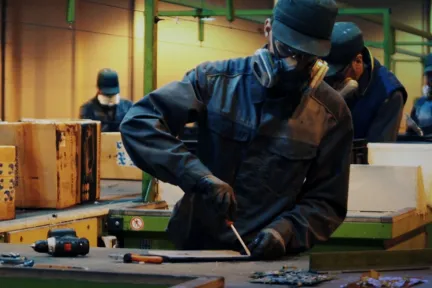
Design for disassembly, a practice embraced by product developers, plays a crucial role in fostering a circular economy. By dismantling and repurposing original components, whether within the same product or an entirely new one, substantial environmental advantages can be achieved.
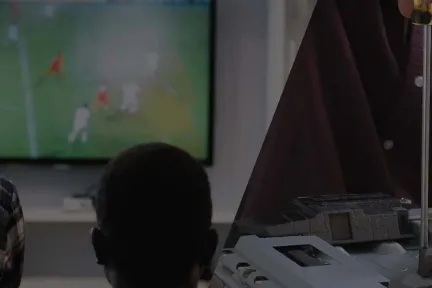
Digitalization keeps waste-reduced products in the loop and unlocks long-term revenue streams in the transition towards the circular economy.
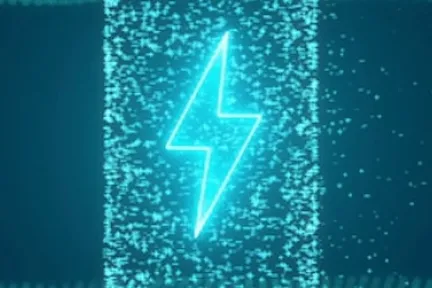
Sustain the electric vehicle boom by scaling up cost-effective and durable battery recycling with virtual twin technology on a unified platform.
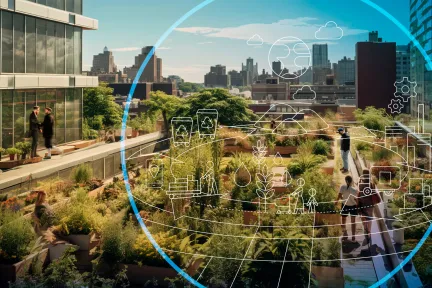
The circular economy is gaining significant traction as a sustainable approach to resource management. By adopting principles such as reducing, reusing, and recycling, organizations and consumers alike can minimize waste, maximize resource utilization, and contribute to the restoration of natural ecosystems.

An increasing lineup of advanced digital solutions have given manufacturers the edge to transform and achieve better inventory control.



